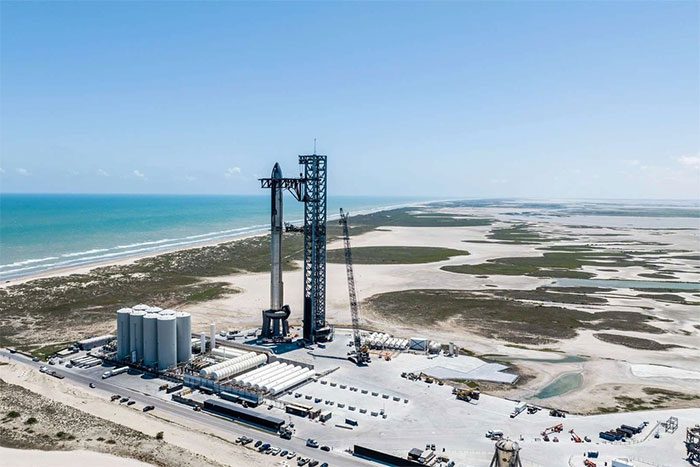The opportunity for Americans to return to the Moon quickly is diminishing. The Federal Aviation Administration (FAA) will not grant a launch license unless SpaceX rectifies the issues as mandated by the agency.
The FAA’s conclusions regarding the explosion during the first test flight of the Starship rocket on April 19 (local time) stipulate that 63 corrective measures must be implemented by SpaceX before they can proceed with the next flight.
This indicates that SpaceX’s upcoming test flight is unlikely to happen before 2024. Meanwhile, both stages of the rocket were assembled on the launch pad on September 6.
The failed test of Starship on April 19 caused significant damage to the launch system, and SpaceX also faces multiple lawsuits from local environmental organizations and an investigation by the FAA, the agency responsible for overseeing private rocket launches in the U.S.
In early September, SpaceX’s owner stated on social media platform X: “Starship is ready for liftoff after engineers have made thousands of improvements, including modifications to the launch pad and the construction of a completely new flood escape system.”
However, this did not convince the FAA; the agency still requires SpaceX to complete all 63 corrective measures to obtain a new flight license.
The FAA’s press release stated that the Federal Aviation Administration is fully aware of the events that occurred on April 19 and requires SpaceX to implement 63 measures to prevent the recurrence of issues seen in the first test flight.

Starship rocket completed assembly on the launch pad. (Photo: SpaceX).
During the launch process, the rocket veered off its intended trajectory, triggering the automatic flight safety system (AFSS) to initiate the rocket’s self-destruct command. This command did not take effect immediately. Additionally, the FAA noted structural faults in the launch pad foundation, causing significant environmental damage.
However, the detailed list of the 63 modifications requested by the FAA has not yet been published. The agency only mentioned improvements to the launch pad to prevent fuel leaks and fires, as well as a series of new analyses and tests to ensure the safety of the launch pad, including flight safety software.
“The FAA will not accept applications for a new flight license for the Starship rocket until all 63 measures are completed and the rocket complies with all regulatory safety and environmental requirements,” a representative of the agency stated.
If SpaceX cannot launch in the near future, the two stages of the rocket will be disassembled and transported back to the hangar to ensure safety and avoid weather impacts.
Notably, the Starship rocket is set to serve the Artemis III mission of the National Aeronautics and Space Administration (NASA), taking astronauts to the Moon, with future plans to conquer Mars.
If its testing and development schedule is delayed, it is likely that NASA’s Artemis program will also have to extend its timeline beyond expectations.
The Starship rocket consists of two main stages, with a Super Heavy booster equipped with 33 powerful Raptor engines, generating about 16.5 million pounds of thrust at liftoff, while the second stage can carry a payload ten times that of the Falcon 9 rocket.
Starship is designed to transport crew members, spacecraft, satellites, and cargo to locations within the Solar System.
Both systems are designed for full reusability, a significant breakthrough that SpaceX founder Elon Musk believes could help humanity reach Mars within reach.
Starship uses methane and liquid oxygen as fuel, both of which can be produced on Mars, allowing Starship to launch from both the Red Planet and Earth.


















































